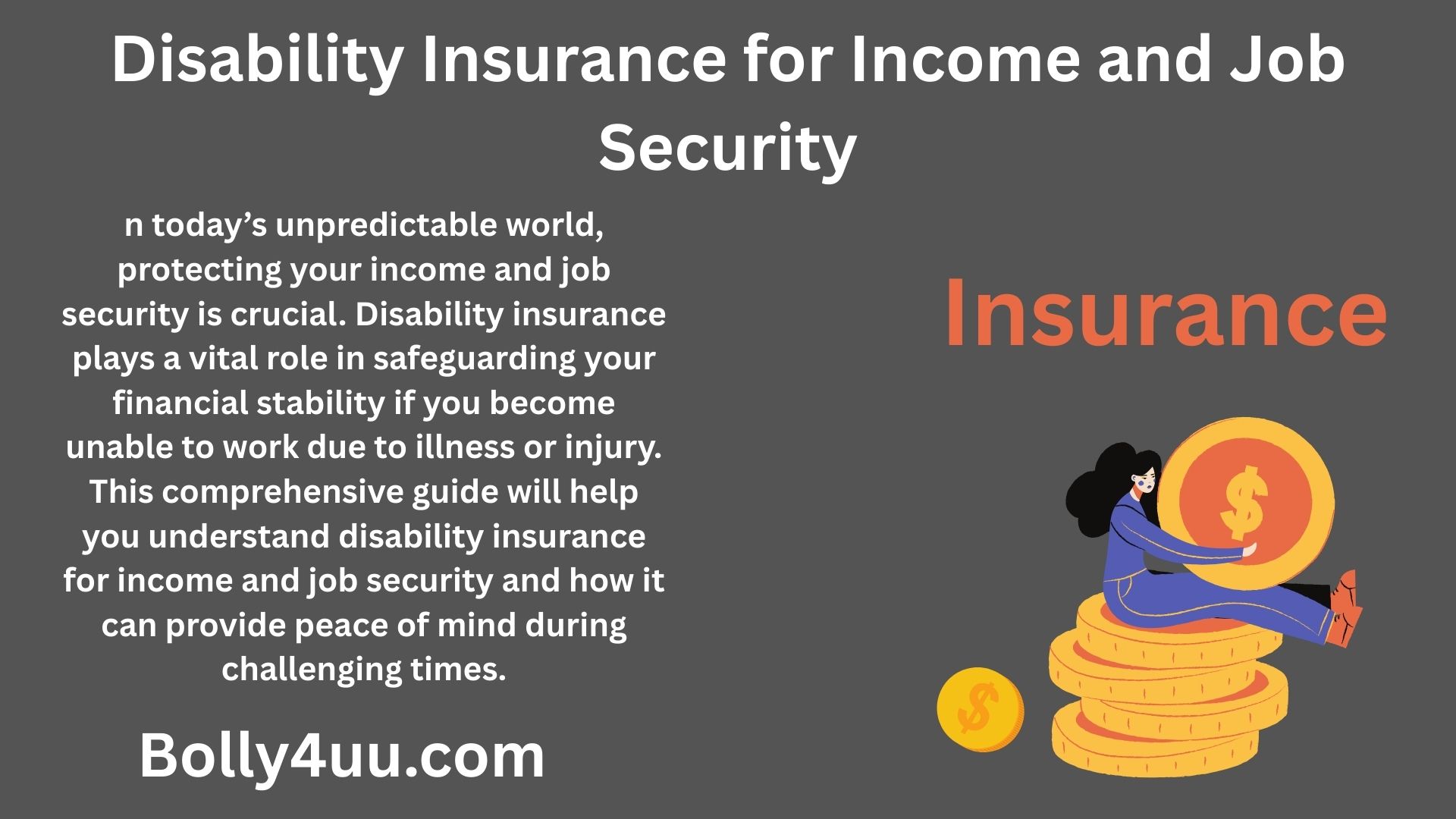In today’s unpredictable world, protecting your income and job security is crucial. Disability insurance plays a vital role in safeguarding your financial stability if you become unable to work due to illness or injury. This comprehensive guide will help you understand disability insurance for income and job security and how it can provide peace of mind during challenging times.
1. What Is Disability Insurance?
Disability insurance is a policy that replaces a portion of your income if you are unable to work due to a disabling condition. It acts as a financial safety net, ensuring you can cover living expenses even when your earning capacity is compromised.
2. Types of Disability Insurance
There are two primary types of disability insurance:
- Short-Term Disability Insurance: Provides coverage for a limited period (usually 3 to 6 months), helping with temporary disabilities.
- Long-Term Disability Insurance: Offers benefits for extended periods, sometimes until retirement, for long-lasting or permanent disabilities.
3. Why Disability Insurance Is Important for Job Security
Losing your ability to work can lead to financial strain and uncertainty. Disability insurance protects your income stream, helping you:
- Maintain mortgage or rent payments
- Cover daily living expenses
- Avoid dipping into savings or retirement funds
- Reduce stress during recovery periods
4. How Disability Insurance Works
Typically, you pay a monthly premium. If you become disabled and meet the policy’s definition of disability, the insurer pays you a percentage of your income (commonly 50-70%) after a waiting or elimination period.
5. Key Features to Look for in Disability Insurance
- Definition of Disability: Own-occupation (unable to perform your specific job) vs. any-occupation (unable to perform any job).
- Benefit Period: How long benefits will be paid.
- Elimination Period: Waiting time before benefits start.
- Benefit Amount: Percentage of income replaced.
- Renewability and Portability: Ability to keep coverage if you change jobs or health status.
6. Who Needs Disability Insurance?
Everyone who depends on their income should consider disability insurance, especially:
- Self-employed individuals
- Professionals with high income
- Primary household earners
- Employees without employer-sponsored coverage
7. How to Choose the Right Disability Insurance Policy
Evaluate your needs by:
- Assessing your monthly expenses and income
- Reviewing existing benefits through work or government programs
- Comparing policy terms, exclusions, and premiums
- Consulting an insurance advisor for personalized recommendations
8. Common Exclusions and Limitations
Be aware of policy exclusions, which may include:
- Disabilities caused by pre-existing conditions
- Injuries due to high-risk activities
- Mental health disorders (sometimes limited coverage)
- Temporary or minor illnesses
9. Benefits of Employer-Sponsored vs. Private Disability Insurance
Employer plans often offer group coverage with lower premiums but may have limited benefits or portability. Private plans provide customizable options and continued protection regardless of employment status.
10. Final Thoughts: Protect Your Income and Peace of Mind
Disability insurance is a critical component of financial planning that ensures your income and job security are protected during unforeseen health challenges. With the right policy, you can focus on recovery while maintaining financial stability.
✅ Key Takeaways:
- Understand the types and features of disability insurance.
- Evaluate your personal and financial needs.
- Compare employer-sponsored and private options.
- Review policy terms carefully to avoid surprises.
